Ullmark appeared in 37 games during his first full year with the Sabres, going 15-14-5 with a 3.11 GAA and .905 SV%. Ullmark will likely play a similar number of games in 2020 as he heads into the season as Carter Hutton’s backup.

Ullmark appeared in 37 games during his first full year with the Sabres, going 15-14-5 with a 3.11 GAA and .905 SV%. Ullmark will likely play a similar number of games in 2020 as he heads into the season as Carter Hutton’s backup.

McCabe appeared in less than 60 games for the second straight season, posting 14 points (4G / 10A) in 59 games in his fourth full year in Buffalo. On the defensive-side of the puck, McCabe averaged 1.7 hits and 1.7 blocked shots per game while ranking third among Sabres’ defensemen in SH TOI/gm (2:09) and fifth in total ice-time (18:57).

Alexandrov was a second-round pick (No.62 overall) in this summer’s draft. The 18-year-old centre had 27 goals and 34 assists (61 points) in 64 QMJHL games last year. He will return to the Charlottetown Islanders for his third season in 2020.

Elie split the 2019 season between the AHL and NHL. He had one assist in 16 games with Buffalo and 14 points (8G / 6A) in 25 games in Rochester. Elie is likely heading to Rochester (AHL) to start the 2020 season.
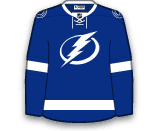
Greer split the 2019 season between the AHL and NHL, scoring one goal and one assist in 15 games in Colorado. During his time in the AHL, Greer was second on the team with 44 points (19G / 25A) in 54 games. He will likely start 2020 in the AHL.

Kallionkieli was a fifth-round pick in this summer’s draft after scoring 29 goals and 24 assists (53 points) in 58 games with Sioux City (USHL).

Girard posted a career-high with 27 points (4G / 23A) in 82 games last season. Girard will be the man in Colorado to start 2020 following the trade of Tyson Barrie. However, Cale Makar could quickly elevate up the depth chart but Girard will likely play on the top-pair and second power-play to open the season.
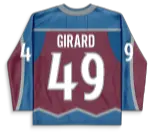
In his second professional season, Butcher had four goals and 26 assists (30 points) in 78 games. It was a step backwards from his rookie campaign and the Devils’ blueline just got a little more crowded with the offseason addition of P.K. Subban. However, Butcher should still see PP1 time throughout the year and should be a solid No.4 fantasy defenseman option.
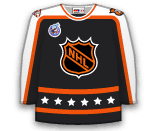
Kamenev only appeared in 25 combined games last year after suffering a shoulder injury in mid-December. Kamenev had just two goals and three assists (five points) in 23 games with the Avalanche and will likely start 2020 on their fourth line.

Gusev was acquired from the Golden Knights and immediately signed a two-year deal with the Devils. The 27-year-old led the KHL with 82 points (17G / 65A) in 62 games last year. He has totalled 63 goals and 152 assists (215 points) in 173 combined games over the last three seasons. Gusev projects to be a top-6 winger for the Devils to start 2020.

Vasilevskiy had an excellent 2019 regular season, leading the NHL in wins (39), fourth in shutouts (6), sixth in SV% (.925) and ninth in GAA (2.40). Despite having a forgettable postseason, Vasilevskiy earned a much-deserved raise, becoming the third highest-paid netminder in the NHL. He should absolutely be one of the first goalies drafted this fall (if not the first).

Rittich played very well for stretches of the 2019 season, going 27-9-5 with a 2.61 GAA and .911 SV% in 45 games with the Flames. However, when it came to the postseason, the Flames leaned on Mike Smith and were ultimately bounced in the first-round. Coming into 2020, Rittich will be battling with Cam Talbot for the No.1 job and the 26-year-old probably has the early edge to win the spot.

McCarron was a first-round pick (No.25 overall) in 2013 but has yet to make an impact at the NHL level. The 24-year-old had 21 points (7G / 14A) in 32 games with Laval (AHL) last year, but had just one assist in 18 NHL games. In total, McCarron has just eight points (2G / 6A) and 110 PIMS in 69 career games with Montreal.

Stephenson had five goals and six assists (11 points) in 64 games with the Capitals a season ago. The 25-year-old has settled into a bottom-6 role with Washington, but will have to battle with offseason additions Garnet Hathaway and Brendan Leipsic for playing time to start the 2020 campaign.

Turgeon had 20 points (6G / 14A) in 72 games with Grand Rapids (AHL) last season. He played in four games with the Red Wings but seems destined to start 2020 in the AHL for the fourth straight season.
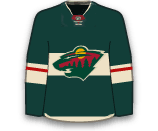
Buchnevich set new career-highs in goals (21) and points-per-game (0.59) in 2019 while appearing in 64 games with the Rangers. Buchnevich has been a breakout candidate for the last two seasons, but 2020 looks like his best chance yet. As long as Buchnevich can remain in the Rangers’ to-6, the additions of Artemi Panarin and Kaapo Kakko should give Buchneviche plenty of talent to work with.

Lettieri spent most of the 2019 season in the AHL, ranking fourth among Hartford skaters with 48 points (23G / 25A) in 48 games. He played sparingly with the Rangers, picking up just three points (1G / 2A) in 27 games. The Rangers added some big names up front this offseason, likely pushing Lettieri back to the AHL to start 2020.

Dries split his 2019 campaign between the Colorado Avalanche and Colorado Eagles (AHL). During his time in the NHL, the 25-year-old centre had three goals and three assists in 40 games. Dries will likely be a fringe NHLer to start the 2020 season. The P-E Bellemare signing this offseason will likely push him back to the NHL to start though.
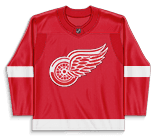
Rodrigues had nine goals and 20 assists (29 points) in 74 games during his first full NHL season in 2018-19. With bigger named prospects faltering around him, Rodrigues settled into a middle-6 role with the Sabres and finished the season ranked fourth among Buffalo forwards in TOI/GP (15:49). Entering the 2020 season, Rodrigues will once again be battling with Casey Mittelstadt for the No.2 centre role.

Weegar had 15 points (4G / 11A) in 64 games with the Panthers last season, while ranking sixth among Panthers defensemen in TOI/GM (16:58). Weegar will likely open the 2020 season as the Panthers No.6 defenseman.

Some of the top NHL free agents available this summer are Mitch Marner, Mikko Rantanen, Aaron Ekblad, Nikolaj Ehlers, John Tavares, Brock Boeser, Brad Marchand and Linus Ullmark.
This offseason will bring a stacked crop of free agents to the market that will shape the landscape of the 2025-26 NHL season. Not only will the final landing spots for each of the top 2025 NHL free agents shake up the framework of the league, but will also have major implications on the upcoming fantasy hockey season. Be sure to stay in the know in regard to the latest free agency updates with our NHL player news.
On July 1st, 2025, at 12 PM EST, the 2025 NHL free agency period officially opens. While some players will have all but signed the dotted line up to this point, nothing can become official until noon on Canada Day.